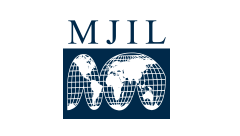Abstract
Every case of humanitarian intervention gives rise to mixed feelings of hope and despair. Hope comes from the involvement of the international community, and despair comes from the fact that the state system is still too weak to meet its basic responsibility, namely, the protection of human dignity. Influenced by these mixed feelings, the present article attempts a new look at the concept of humanitarian intervention. In Part I, it examines the concept of humanitarian intervention. Part II analyzes the principal aspects of humanitarian intervention: the reasons for the intervention, the character of the target state, and the status of the intervenor. In Part III, the article examines the major issues involved in these interventions, particularly their objectives, validity, nature, and priority. This exercise exposes some striking inadequacies in the existing law relating to humanitarian intervention. An understanding and appreciation of these inadequacies would help in the evolution of a new international humanitarian order, the salient features of which are discussed in Part IV of the article.
Recommended Citation
Yogesh K. Tyagi,
The Concept of Humanitarian Intervention Revisited,
16
Mich. J. Int'l L.
883
(1995).
Available at:
https://repository.law.umich.edu/mjil/vol16/iss3/11
Included in
Human Rights Law Commons, International Humanitarian Law Commons, Military, War, and Peace Commons

